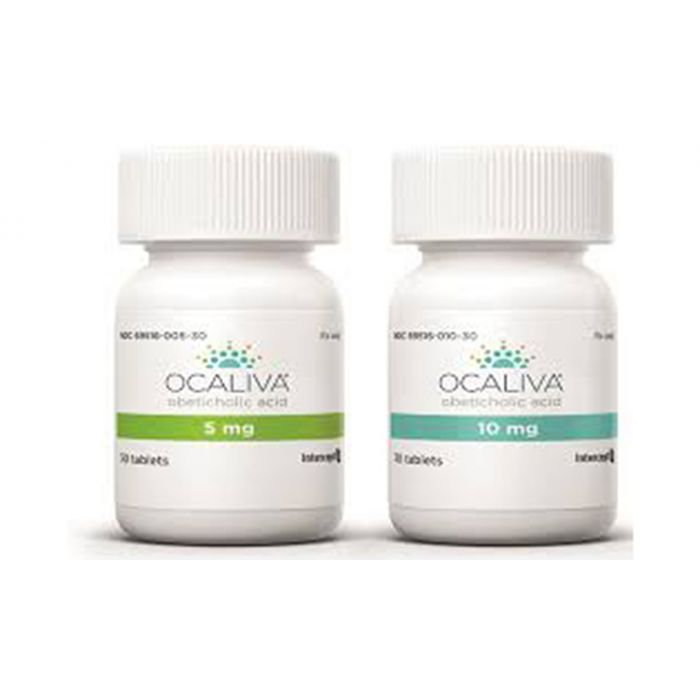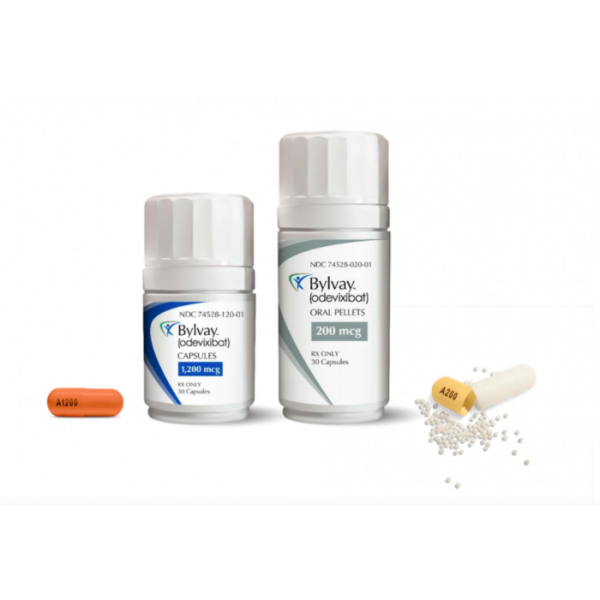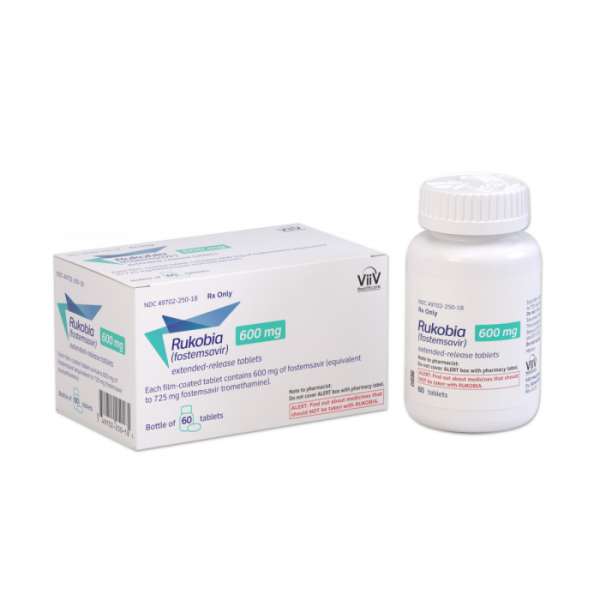What is Ocaliva (obeticholic acid) for?
Obeticholic acid is indicated for the treatment of primary biliary cholangitis (PBC) in combination with ursodeoxycholic acid (UDCA) in adults with an inadequate response to UDCA, or as monotherapy in adults unable to tolerate UDCA[1].
How does Ocaliva (obeticholic acid) work?
PBC is a chronic or long-lasting disease that causes the small bile ducts in the liver to become inflamed, damaged and ultimately destroyed.
This causes bile to remain in the liver, damaging liver cells over time and resulting in cirrhosis, or scarring of the liver. As cirrhosis progresses and the amount of scar tissue in the liver increases, the liver loses its ability to function. Obeticholic acid, given orally, binds to the farnesoid X receptor (FXR), a receptor found in the nucleus of cells in the liver and intestines. FXR is a key regulator of bile acid metabolic pathways. Obeticholic acid increases bile flow from the liver and suppresses bile acid production in the liver, thus reducing the exposure of the liver to toxic levels of bile acids[2].
Is Ocaliva (obeticholic acid) approved?
Obeticholic acid was approved for the treatment of patients with primary biliary cholangitis (PBC) by:
- FDA (USA) on May 27, 2016[2]
- EMA (EU) on December 12, 2016[3]
- Health Canada on May 24, 2017[7]
- TGA (Australia) on September 21, 2018[6]
How do I take Ocaliva (obeticholic acid)?
The recommended therapy consists of:
- Starting Dosage: the recommended starting dosage of obeticholic acid is 5 mg orally once daily in adults who have not achieved an adequate response to an appropriate dosage of UDCA for at least 1 year or are intolerant to UDCA.
- Dosage Titration: if an adequate reduction in ALP and/or total bilirubin has not been achieved after 3 months of obeticholic acid 5 mg once daily and the patient is tolerating obeticholic acid, increase dosage to 10 mg once daily.
- Maximum Dosage: 10 mg once daily.
For the management of patients with intolerable pruritus or hepatic impairment see full prescribing information[1].
Warning: Correct dosing is of the utmost importance. The FDA (USA) warns that incorrect dosing in some patients with moderate to severe decreases in liver function may result in an increased risk of serious liver injury and death[5].
Complete information about obeticholic acid dosage and administration can be found in the resources section.
Note: Consult your treating doctor for personalised dosing.
Are there any known adverse reactions or side effects of Ocaliva (obeticholic acid)?
Common adverse reactions
The most common adverse reactions (≥ 5%) listed in the prescribing information include:
- pruritus
- fatigue
- abdominal pain and discomfort
- rash
- oropharyngeal pain (pain in the throat or in the ears)
- dizziness
- constipation
- arthralgia (pain in joints)
- thyroid function abnormality
- eczema
Serious adverse reactions
The serious adverse reactions listed in the prescribing information include:
- hepatic decompensation and failure in incorrectly dosed PBC patients
with Child-Pugh Class B or C or decompensated cirrhosis - severe pruritus
- reduction in HDL-C (“good cholesterol”)




Reviews
There are no reviews yet.